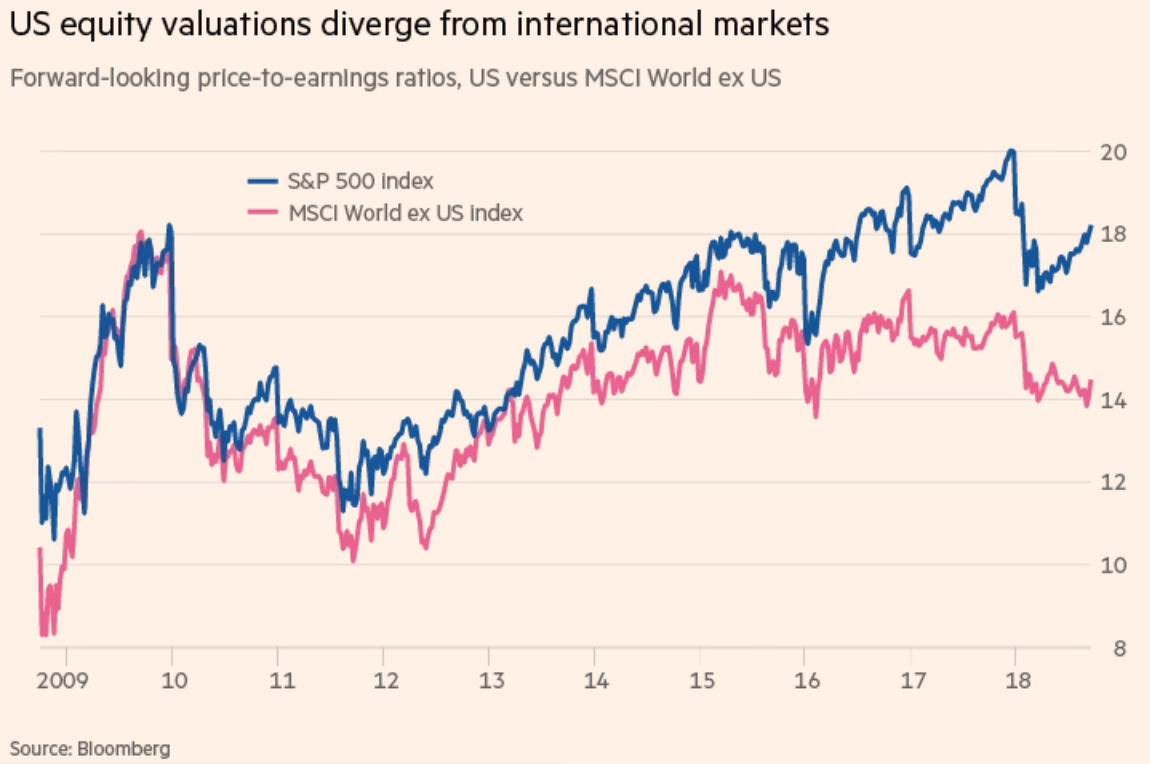Weekly Market Update
Weekly Market Update
-
Author : Laura Hochstetler
Date : September 29, 2018
Market Action
Asian stocks ended the third quarter on a strong note. Japan’s Nikkei 225 led major indexes in the region with a more than 1% gain, while China’s Shanghai Composite Index rose nearly 1%. Japan’s benchmark index hit peaks not seen in nearly 27 years, amid improving corporate profits, a healthier economy and a weaker yen. Click here for this week’s update on market returns.
South Korea and the United States signed an updated free trade agreement, and Japan and the US agreed to begin formal negotiations on a bilateral trade pact. The US agreed not to place tariffs on Japanese auto exports to the US while talks are ongoing. Canada and the US remained at odds over a renegotiated NAFTA (North American Free Trade Agreement), but the US left the door open for Canada to join the pact later this year.
On Monday, the US imposed tariffs of 10% on $200bn worth of Chinese goods, making good on a threat that US President Trump made in August. In response, China said it would impose tariffs on US imports worth about $60bn. The latest round of US tariffs – which are set to increase to 25% on January 1 – come on top of $50bn worth of Chinese goods that the U.S. has already tariffed this year and raised expectations that the White House is prepared to press on with yet another round of tariffs.
As widely anticipated, the US Federal Reserve lifted its benchmark interest rate by a quarter of a percentage point, to a range of between 2% and 2.25%, the third rise this year.
European markets were weighed by political turmoil in Italy, where the new anti-establishment government proposed a 2019 budget with a much wider deficit than the previous administration’s target, setting up a clash with the European Commission. The full budget will be unveiled in October and will be scrutinized by the European Commission, which could reject it.
Argentine assets, especially the peso, were volatile amid reports that the government was seeking an increase in the size of the three-year, $50bn IMF bailout package, as well as the unexpected resignation of Luis Caputo, who only a few months ago became the president of Argentina’s central bank. On Wednesday, the IMF agreed to boost its aid package to about $57bn and to increase the amount of loan money to be made available to Argentina by the end of 2019.
What could affect markets in the week ahead?
A brief respite from market-moving Brexit headlines will almost certainly end next week for sterling traders, as Britain’s ruling Conservative Party kicks off its annual conference. As UK Prime Minister Theresa May tries to rally support for her efforts to secure a comprehensive Brexit deal with the European Union, Boris Johnson – her former foreign secretary – is leading a last-minute push to get her to change course from her plan to keep close economic ties with the bloc after Brexit in March next year in favor of a more definitive break with the EU in a free-trade arrangement similar to Canada’s. The competing visions of Brexit promoted by Mrs. May and Mr. Johnson, who has emerged as her chief antagonist in the Tories’ internal debate, are expected to dominate the Conservatives’ four-day annual conference that will run from Sunday to Wednesday.
The Tankan survey is one Japan’s most closely followed economic releases, offering insights into the performance of Japan’s economy. The Q3-2018 release is due Monday, several weeks ahead of the official GDP release, and the Tankan survey will be scanned for clues as to whether Japan’s recent growth is likely to continue.
Next week a raft of key US economic data for September will be released, but there is a lot of uncertainty over the numbers given the potential for distortions related to hurricane Florence. Economic activity will undoubtedly have been impacted in the US East Coast region given evacuations and subsequent disruption, but the extent of the impact is also dependent on when the data was collected, adding to the level of uncertainty.
Next Friday’s update on the US employment situation is expected to show unemployment rates dropping back to 18-year lows of 3.8%. One area of employment recovery that has lagged is the participation rate, which is stuck near a four-decade low. As large numbers of long-term unemployed Americans opt out of the workforce, the participation rate for Americans over the age of 16 has not topped 63% in more than four years. It was last measured at 62.7%.
This Week from BlackSummit
Crossroads: At the Intersection of Geopolitics and Geoeconomics
Abe Finley
Recommended Reads
Gold Is Cheap. Inflation Is Coming. You Do the Math
Andrew Bary
The “Dumb” Money Is Bailing on U.S. Stocks. That’s Smart.
Jason Zweig
An Economic Cold War Looms Between the U.S. and China
Greg Ip
How China Systematically Pries Technology From U.S. Companies
Lingling Wei and Bob Davis
As Debt Rises, the Government Will Soon Spend More on Interest Than on the Military
Nelson D. Schwartz
The potential of manufacturing and industrialization in Africa
Landry Signé
Video of the Week
Powerful earthquake hits Indonesian island Sulawesi
Image of the Week

